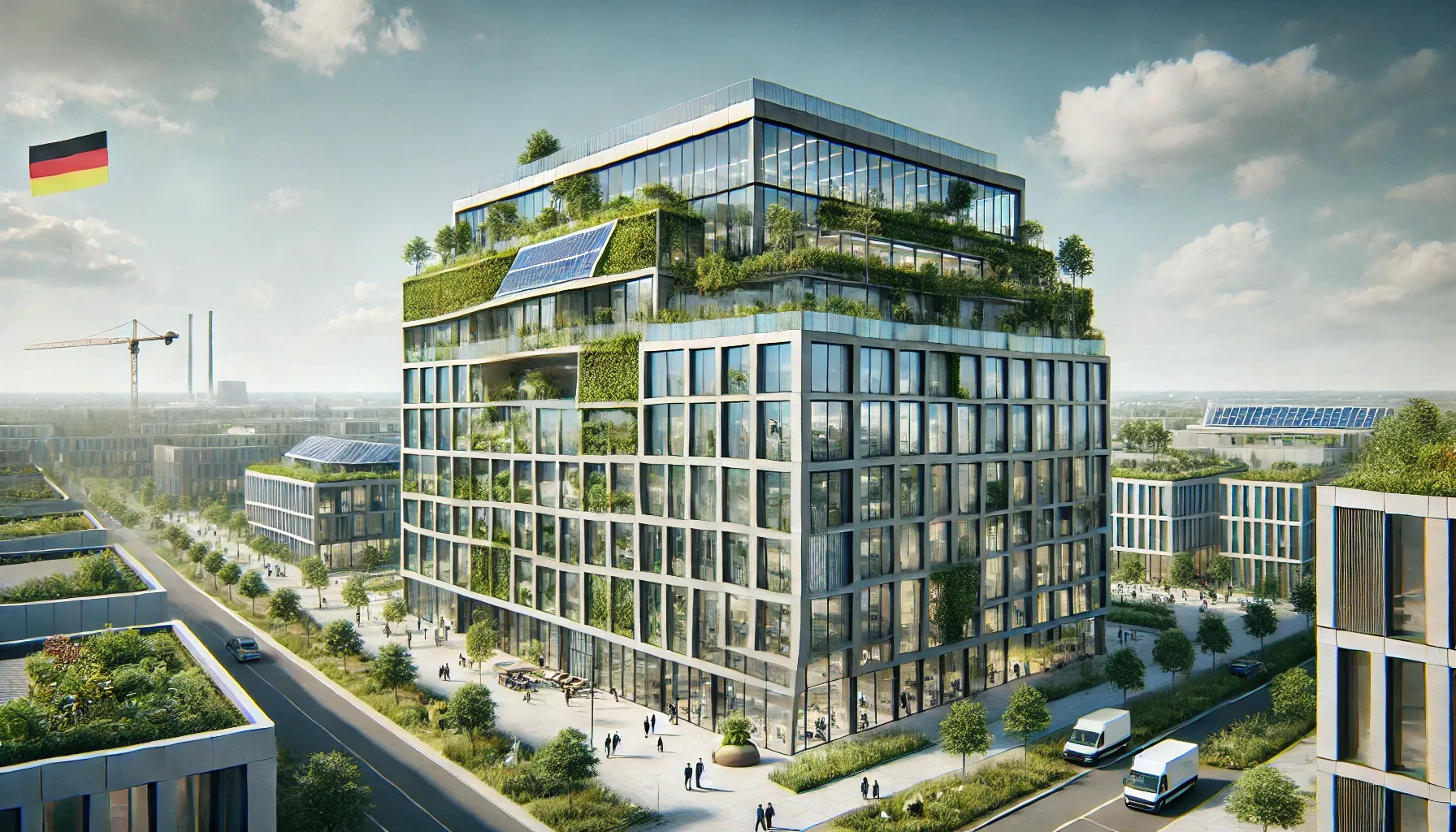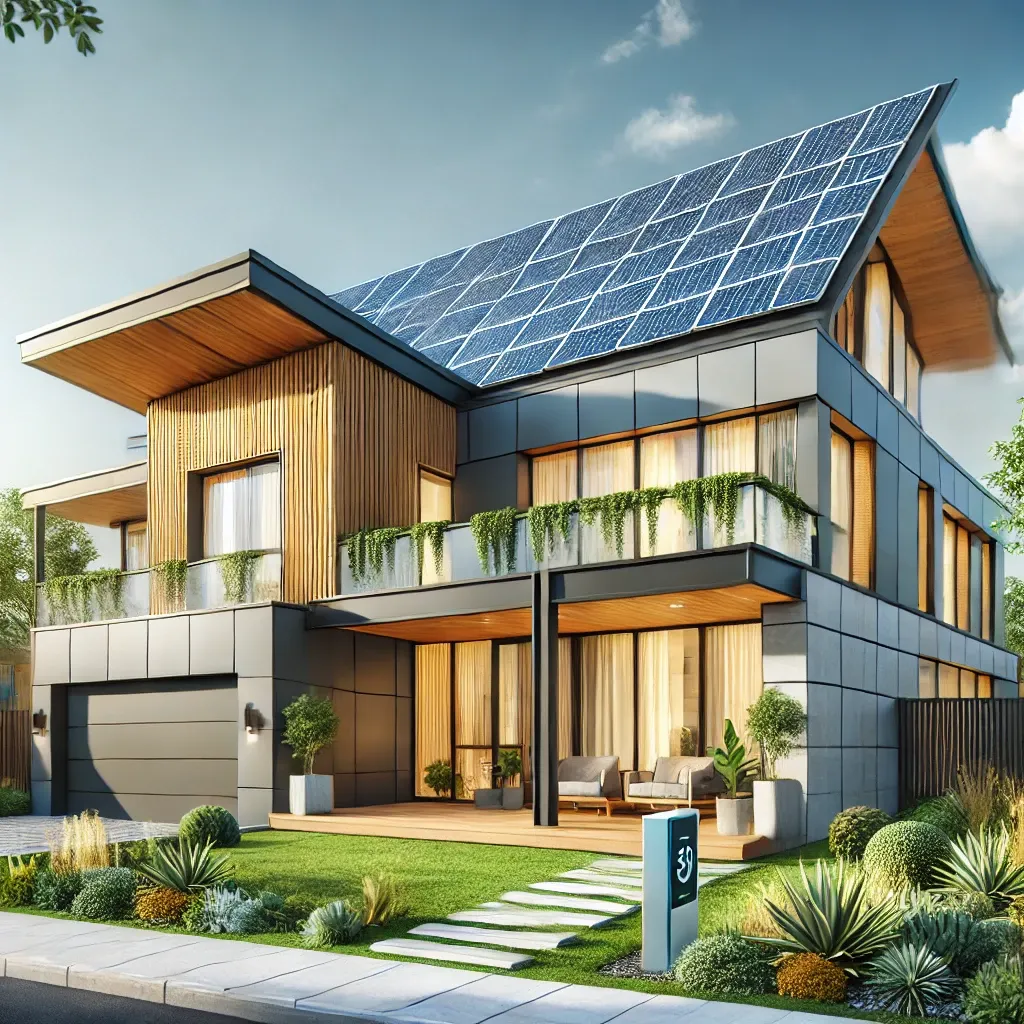Energy-efficient housing in Germany: how to obtain a subsidy for construction and purchase

- Support for energy-efficient construction in Germany
- Energy-efficient KFW homes: Standards and their implementation
- KfW Energy Efficient Homes: Subsidies and Sustainable Construction
- Subsidies and energy efficiency: opportunities and benefits
- Receiving government support for families in Germany
Attention citizens of Germany!
The government of the country is striving for sustainable development and encourages the construction of energy-efficient buildings by providing subsidies. Energy-efficient homes have a number of advantages, including access to favorable mortgage conditions and the possibility of partial compensation for loans when purchasing an apartment or flat in an energy-efficient building.
Investors involved in the development of energy efficient buildings can also take advantage of investors developing energy efficient buildings can also take advantage of government subsidies to help increase the profitability of the project.
Quality and standards of energy efficiency
The KfW energy efficiency quality standard regulates the energy efficiency of buildings. It defines how effectively energy is used in a building, as well as the level of thermal insulation of the structure. The consumption of primary energy assesses the level of energy costs for heating, ventilation, and hot water preparation. The heat loss indicator during transmission indicates the degree of heat loss through the enclosing structure in heated rooms.
There are various types of standards: KfW 40, KfW 40+, KfW 55. The Federal Ministry of Economics and Energy will stop funding houses with KfW 55 energy efficiency in 2022, but will continue to finance projects with higher energy efficiency standards. The lower the standard value (40, 40 plus, or 55), the more funding can be obtained, which may serve as an incentive for the construction of more energy-efficient buildings in Germany.
The concept of energy-efficient buildings
To demonstrate the high efficiency of buildings, the example of the 100 KFW Efficiency House can be cited. House, which fully complies with the requirements of the Energy Saving Act (Energieeinsparverordnung - ENEV). For example, the 55 KFW Efficiency House consumes only 55% of primary energy compared to the ENEV reference building (100 KFW Efficiency House). ENEV reference building (100 KFW). This indicates that its thermal insulation is 30% more efficient. The legal standard for new construction is 75% energy efficiency relative to the reference building. Obtaining funding for KFW Efficiency House 55 requires the construction of a building 25% more efficient than the ENEV minimum requirements.
KFW Efficiency House Standard 40 Plus
KFW Efficiency House 40 Plus is the pinnacle of efficiency. The standard Efficiency House 40 is enhanced with a plus package that allows for the generation and use of its own electricity. Electricity is primarily generated from a photovoltaic system that combines solar panels or solar cells, as well as the storage of accumulated energy and heat recovery from the ventilation system. This allows for additional energy savings, greater autonomy, and eligibility for government subsidies for construction.
Implementation of the KFW Efficiency House standard
The KFW Efficiency House standard is achieved through a variety of structural and technical measures, particularly in heating, ventilation, and insulation. Even distribution of thermal insulation throughout the structure and the use of renewable energy sources are key. This can be achieved, for example, through the heat from outside air via heat pumps, solar energy for heating, or the installation of a ventilation system with heat recovery.
The uniqueness of each building
It is important to remember that each building is unique, and the same methods can lead to different efficiencies in different structures. Therefore, it is essential to carefully analyze each common energy-saving project and take into account the individual characteristics of the buildings.

Energy-efficient house from KfW Efficiency House 55
An example of an energy-efficient house from KfW Efficiency House 55 includes good thermal insulation of the walls, roof, and basement, as well as windows with triple glazing and a brine-water heat pump. This house generates energy from the ground, making it environmentally friendly and cost-effective.
Funding and subsidies for energy-efficient homes
Financing for such projects is in the form of subsidies that depend on the energy efficiency class of the building. energy efficiency of the building. For example, for the KfW Efficiency House 40 Plus, up to 25% of the maximum loan amount of €150,000 can be obtained, which is up to €37,500 per apartment.
Certificate of sustainability and the use of renewable energy sources
In order to obtain a sustainability certificate, a house from KfW must use at least 55% renewable heat sources. This helps reduce energy consumption and make housing more environmentally friendly.
Additional subsidy opportunities
Since July 1, 2021, subsidies are also available for renovating housing to KfW standards or for purchasing homes/apartments that meet these standards. This is a great opportunity to make your home more energy-efficient and environmentally friendly while receiving additional financial support from the government.
Table with subsidies
Below is a table showing the maximum subsidy amount for building renovation according to various energy efficiency standards. For example, if a building is classified as a KfW Efficiency House, a subsidy of up to 45% of the maximum loan amount of €120,000 can be obtained. If the building is also assigned a renewable energy class, the subsidy percentage will increase to 50%.
The same applies to other energy efficiency classes. For example, for a building classified as KfW Efficiency House 85, the subsidy amount can be 30% of the maximum loan amount. If the building obtains renewable energy status, the interest rate will increase to 35%.
Additional subsidies
Interestingly, for those individuals who applied for construction at least five years ago, there is a possibility of receiving further subsidies in the future. Additionally, by creating a personalized renovation schedule with the help of a certified energy efficiency specialist, one can receive an additional 5% in subsidies.
Increasing energy efficiency
In order to improve the energy efficiency of houses, it is possible to combine several KfW financial products and receive either a grant with no repayment obligation or a loan with a lower interest rate. KfW products and receive either a grant with no repayment obligation or a loan at a lower interest rate. interest rate. It is also possible to apply for a loan for the installation of renewable energy systems (kimeru: photovoltaics). (kimmeru: photovoltaic systems with stacked batteries). In this case, a grant of €28,200 is available. a grant of €28,200.
Families with children have the opportunity to receive a government allowance (Baukindergeld) of up to €12,000 for each child. The KFW loan program offers financial support of up to €100,000 to cover costs for construction, materials, legal services, property taxes, and much more.
Steps to participate in the program
To participate in the KFW program, you need to complete four main steps. The first step is to plan the project with an energy efficiency expert, who can be found on the official website of the German Energy Agency (DENA). KFW also offers an additional subsidy of up to €4000 for construction supervision.
When purchasing a new house or apartment "turnkey," it is recommended to contact the manufacturer or developer for information about the KFW Efficiency House Standard. Next, it is important to discuss the details of the program with a financial partner before starting construction or buying the property.
Once you receive "application confirmation" from an energy efficiency expert or the builder, the financial partner will help you apply for a loan. Conclude the loan agreement with the financing partner and once the financing is approved, you can start construction or conclude a sales contract.
Upon completion of the construction work, it is necessary to send a "completion confirmation" to the financial partner in order to receive the grant. When purchasing a "turnkey" home, such confirmation can be obtained from the developer or manufacturer.
Choosing a standard for financing
The choice of standard for financing depends on a number of factors: the type of house, the climate region, the desired indoor temperature, and the heating system. For example, when choosing between the KFW 55 and KFW 40 plus standards for a house for 4 people, one can save on heating and electricity costs per year, as well as increase the property's value.
However, it is important to remember that meeting the KFW 40 plus standard will cost you more than the KFW 55 standard. Additionally, funding for the KFW 55 standard can only be obtained until January 31, 2022, after which the program will close, and subsidies will only be available for projects that meet the KFW 40 standard.
Obtaining a subsidy for the construction of an energy-efficient building
This is an important step in supporting sustainable development and the transition to new types of energy.
KFW energy efficiency standards
Standards such as KFW 40, KFW 40+, and KFW 55 define the energy consumption level of a building.
The role of thermal insulation and renewable energy sources
They play a key role in achieving high standards.
A well-developed overall concept of energy
It is important to have it for achieving optimal energy efficiency.
Support from the German government
This area is key to the development of environmentally friendly and energy-efficient buildings.
Subsidies and favorable mortgage terms
They create attractive opportunities for investors and buyers.
Comment
Popular Posts
9 October 2024
2138
9 October 2024
272
Popular Offers

Subscribe to the newsletter from Hatamatata.com!
Subscribe to the newsletter from Hatamatata.com!
I agree to the processing of personal data and confidentiality rules of Hatamatata


